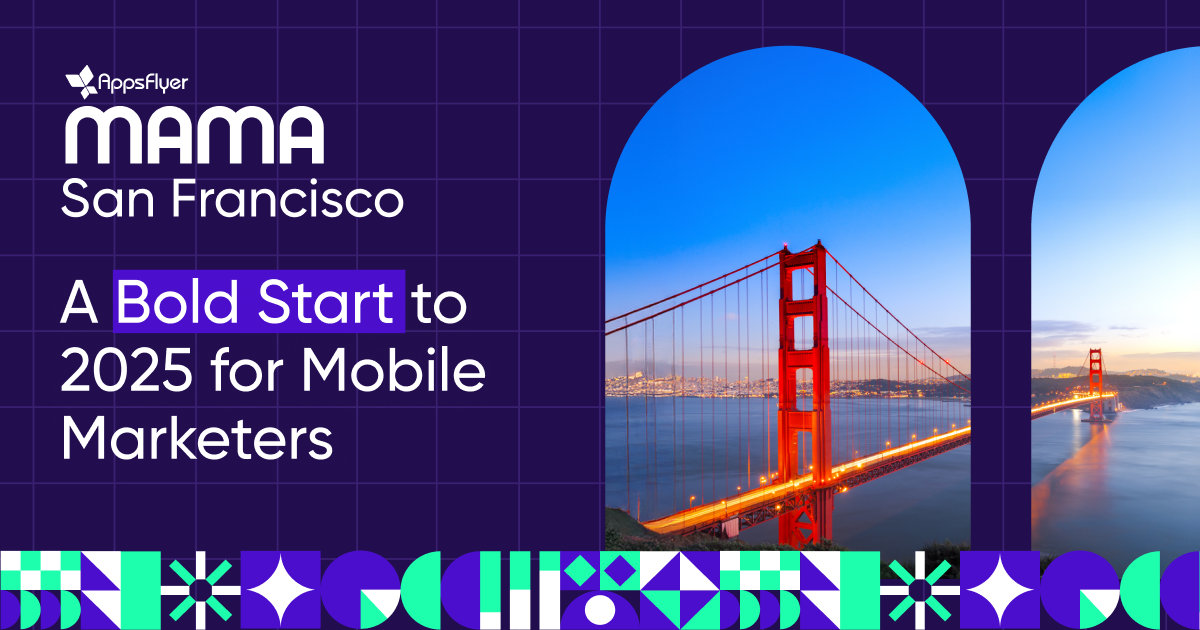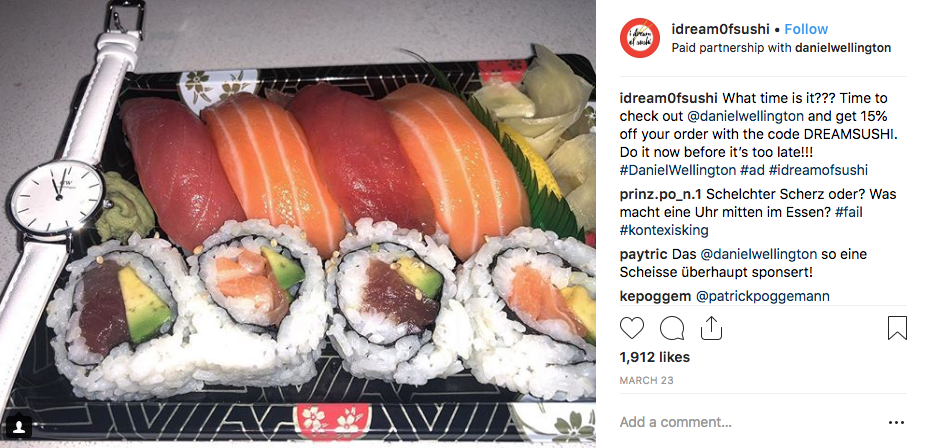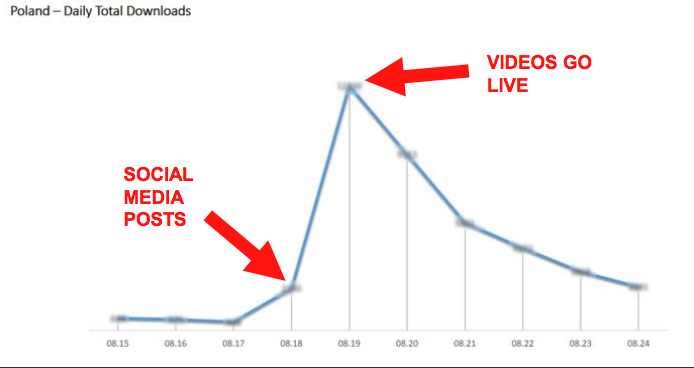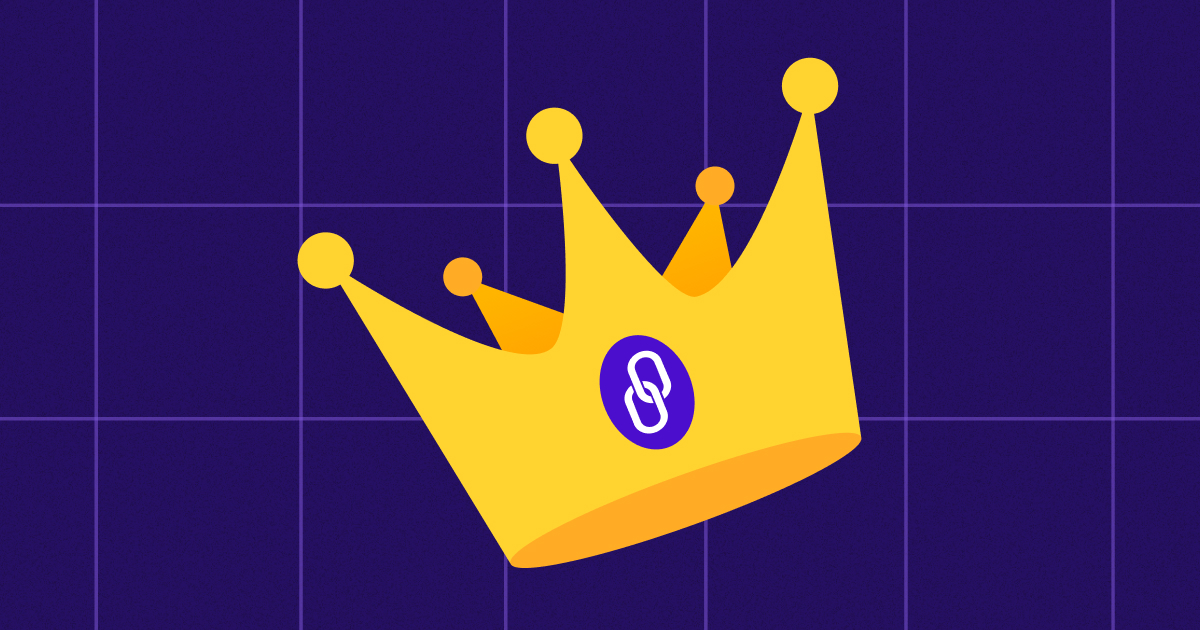
Open to influence? The pros and cons of influencer marketing for apps

You know how you may think influencer marketing is a fail-safe, powerful tool for generating lots of new users for your app?
Well, things might not always turn out according to plan when influencers get angry or go off-script and misrepresent your brand, among many other scenarios.
That’s why, in this two-part blog series based on our experiences, good, bad, and ugly, we will discuss some of our failures and learnings, as well as tips and tricks about influencer ad campaigns to set you straight.
Let’s deep dive into part one which will explore the delicate duality, advantages and disadvantages, of influencer marketing.
The good and the bad of influencer marketing
Content creators, influencers, celebrities – they all have something in common: they are sales machines.
They have proven that they can drive a vast amount of traffic to any website, event, or app, although primarily when their external brand recommendation to their existing audience is authentic and well-executed.
For example, during the 2017 Super Bowl, AirBnB provided Lady Gaga with a $20 million estate in Houston for the duration of her stay. Lady Gaga thanked AirBnB in a sponsored Instagram post, in which she posed in front of the house. Not only did the post reach Lady Gaga’s more than 27 million followers on Instagram, but it also got a lot of coverage from the press, with features in Vanity Fair, Buzzfeed, and People.
Influencers are also commonly used in the gaming realm.
For example, Next Games, the company behind the popular “Walking Dead: No Man’s Land,” partnered with 5 popular Youtubers whose collective subscribership totals 18 million viewers to promote their game.
One of the most well-known of these influencers, Lele Pons, created a video in her signature comedic style that portrayed her and some friends in “real life” game play. Ultimately, with the creative freedom Next Games gave her, Lele’s video received over 10.9 million views.
Just like with AirBnB and Next Games, there are many examples of successful campaigns, and that’s our main point: influencers work.
Sometimes, however, influencer marketing campaigns don’t always go according to plan. While influencers can certainly uplift brand sales and awareness, they also have the power to ruin it through intentionally negative commentary, off-script presentations, and overall lack of brand alignment, among other risks.
We can see clearly from the example below (and, unfortunately, there are many more) of how much risk a brand can take by choosing an unsupportive influencer:

There are plenty of times, however, in which influencers are willing to share products or services with their audiences. The hard work doesn’t stop when the connection with an influencer is made, though it is necessary for companies to regulate and agree upon guidelines for the influencers to follow.
This example shows two fitness influencers who may have been given too much leeway with their creative expression…
Lastly, even though influencers can be a powerful marketing tool for extending company reach, they are not experts of your company and often may be unable to truly capture your brand’s essence.
Here, this Daniel Wellington watch brand might not actually smell fishy, but it definitely creates a serious branding problem for itself.

Aside from the unpredictability on the influencer end, problems can also arise when we try to automate, scale, or replicate successful campaigns based on expected calculations. Using tools like an unbiased MMP and the baseline calculations about our organic downloads, we try to calculate a “formulaic” conversion rate and we hope our math works… until it doesn’t.
At this point, we have to examine the reasons for this and how to improve apart from trying to identify influencers that might have the right demographics in their audience.
The top 10 pain points of working with influencers
We’ve already mentioned several risks of working with influencers.
From our own experience, there are many challenges.
Here’s a more comprehensive list of some of the most common:
- Measuring both the attribution of and effect on organic uplift is especially difficult when multiple influencer product placement campaigns run in parallel. At that point, virtually no uplift can be measured.
- The overall management of campaigns, including troubleshooting “diva” behavior and balancing between influencer’s creative freedom and brand alignment. Because many influencers insist on their creative freedom, brands often take a step back with their own guidelines, resulting in irrelevant or even valueless content for users and companies alike. Bottom line: influencer management is key!
- Videos uploaded without approval which may even include links to your competitors, online stores (like Amazon), etc. in the description above your own link(s)
- Performance risks (low click-through rate, creative risk, backlash of a bad ad, budget waste on underperforming campaigns)
- Low performance overall
- Influencer costs based on brand exposure, not performance results or specified KPIs
- Discrepancies in user experience caused by poor influencer description of your app
- “One-shot” campaigns. Often, once a product campaign has been published by an influencer, there are low chances of reaching the same audience with another video, as it’s uncommon for influencers to film a second video for the same brand.
- Massive spikes in downloads for smaller or developing apps without proper bandwidth, inventory, or programmatic capabilities. In a real-life use case, for an eCommerce app with only 10 pairs of a shoes in a certain size, for example, download spikes can become unmanageable and are more likely to increase customer complaints, bad app store reviews or a high churn among users with expressed intent but unmet expectations.
- Diluted organic cohort KPIs due to non-attributed organic uplifts. Assuming an influencer campaign is successfully prepared and executed, the MMP will be able to measure all the clicks and installs. However, there is also typically a 30-40% uplift in “organic” users, compared to the original user baseline that is driven by the influencer, but actually created from “organic” app store search. For this reason, these users are attributed as organic, thereby “diluting” the KPIs of your true organic downloads and skewing insights about your organic cohorts.
Each of the above mentioned pain points can be a major source of confusion. In a worst case scenario, given the presence of more than one of these challenges, it may not always be clear if the next campaign you book & pay for upfront will bring you the downloads you are looking for.
Organic uplift from influencer campaigns
Let’s paint a scenario: the graph below highlights one case study from an influencer agency.
Their objective is to sell marketers good momentum and then, of course, to replicate that success for you:

As highlighted in the graph, the limitations of this type of campaign can be heavy:
- Massive spikes after previously low traffic will cause server issues, possibly slowing your app – depending on your infrastructure obviously but also can cause an increase in customer support calls, the advertised show is not available anymore, the restaurant can’t take more orders, etc)
- Immediate drops one day after video release
- Skewed cohort analysis of actual organic users, as users acquired from influencer marketing are considered to be paid and (somewhat) incentivized to download your app
- Live streaming doesn’t give you extensive audience reach due to average duration of several hours. During the stream itself, the audience will inevitably fluctuate, which means that product placement will not be consistent throughout the entire event.
- Despite the above, when dealing with two or more influencers per day, such massive spikes will no longer exist in your download curve. In this scenario, your influencer campaigns will determine your new user baseline, making individual uplift analysis impossible.
Key takeaways
Based on the pain points and general inevitable challenges of working with this marketing tool discussed above, it cannot be understated that influencer marketing can be as risky and unpredictable as it is powerful and versatile. Because the core of influencer marketing rests with the influencers themselves, successful use of this marketing strategy is based on understanding, troubleshooting, and cooperating with a deeply personal and human mechanism.
Marketers must also be prepared for complex project management, consistent campaign testing, and thorough data monitoring to overcome issues such as uncooperative or creatively misguided influencers, “diluted” organic uplift, and overall low performance, among others.
For this reason, good influencer marketing management requires both technical and creative skills for effective execution.
Despite its challenges, influencer marketing is a powerful and intimate tool for spreading brand and product awareness, and boosting your KPIs. In our next post, we will discuss these benefits and offer actionable insights for making it an essential part of your marketing toolbox right away.




